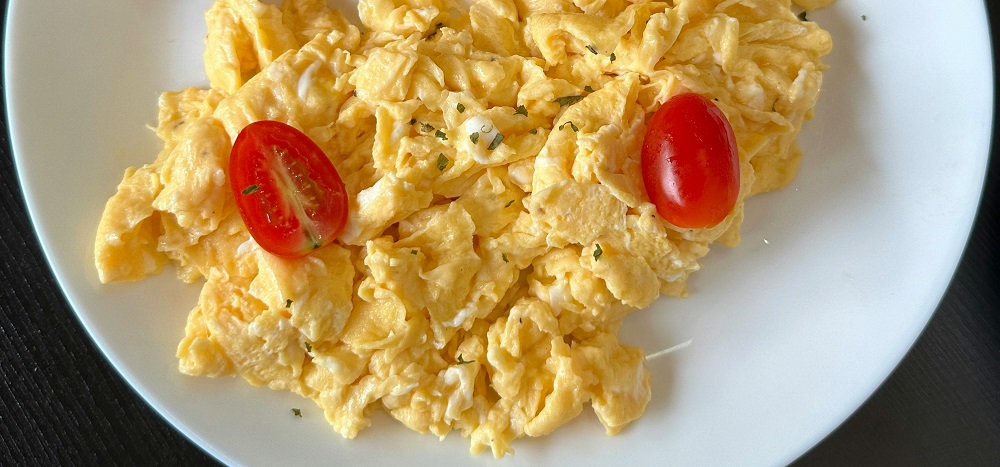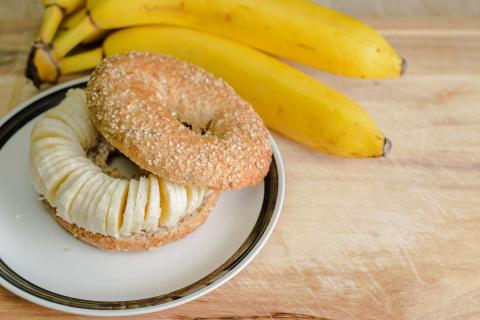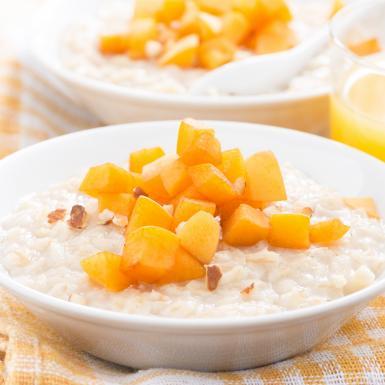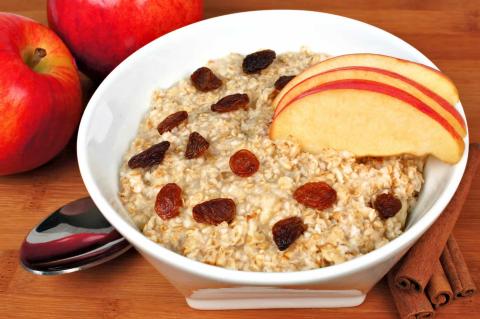- 6 Medium Eggs
- 2 Tablespoons (30g) Low Fat Spread
- 12 Tablespoons (180ml) Semi-Skimmed Milk
- 1 Pinch Black Pepper to taste
- 4 Thick Slices Wholemeal Bread
Ingredients
Allergy Disclaimer
Always check the label of each ingredient for allergy warnings.
Method
- Using a fork mix the eggs and milk in a bowl.
- Heat the low fat spread in a pan, do not let it brown.
- Add the egg mixture to the pan and allow to set for 20-30 seconds.
- Stir with a wooden spoon, lifting from the bottom of the pan, leave for 10 seconds and then stir again. Repeat until the eggs are setting.
- Remove from the heat and allow to stand for 10-20 seconds to finish cooking then stir and serve on toast. Add pepper to taste.
Cost Saver Tips
One easy way to pad out their plate is to serve it with your favourite toasted bread. Wholemeal bread will help your little one get some extra fibre, too. But if they aren't keen on wholemeal toast try 50:50.
Tips for Kids
They’ll love being a little helper, cracking the eggs. Just remember to wash their hands after handling raw eggs. You could also try scrambled egg on a toasted muffin. Or why not add some tomato to your egg? This would make a nice lunch.
Nutritional Information
Based on a single serving of 160g (% of an adult's reference intake)
Energy
246 kcals ( 12 %)
1,034 kJ ( 12 %)
Fat
3.2 g ( 16 %)
Saturates
21.9 g ( %)
Sugar
3.5 g ( 4 %)
Salt
0.9 g ( 15 %)
Detailed nutritional information
| Per 100g | Per 160g serving | |
|---|---|---|
| Energy Kcals | 154 | 246 |
| Energy Kj | 646 | 1,034 |
| Protein | 9.7 g | 15.5 g |
| Total Fat | g | g |
| Saturated Fat | 2 g | 3.2 g |
| Carbohydrates | 13.7 g | 21.9 g |
| Total Sugars | 2.2 g | 3.5 g |
| NSP Fibre | 2.1 g | 3.4 g |
| Sodium | 224 mg | 358 mg |
| Salt | 0.6 g | 0.9 g |
Find out about nutritional labelling
Nutrition labels on the front of packaging
- Most of the big supermarkets and many food manufacturers display nutritional information on the front of pre-packed food.
- Front of pack nutrition labels provide information on the number of grams of fat, saturated fat, sugars and salt and the amount of energy (in kJ and kcal) in a serving or portion of a recipe.
- The labels also include information about reference intakes (expressed as a percentage) which are guidelines about the approximate amount of particular nutrients and energy required for a healthy diet.
- The colour coding tells you at a glance if the food has high (red), medium (amber) or low (green) amounts of fat, saturated fat, sugars and salt.
- The more greens on the label, the healthier the choice
- Amber means neither high nor low, so you can eat foods with all or mostly ambers on the label most of the time.
- Reds on the label means the food is high in that nutrient and these are the foods we should cut down on. Try to eat these foods less often and in small amounts.
Food shopping tips
If you’re trying to decide which product to choose, check to see if there's a nutrition label on the front of the pack. This will help you to quickly assess how your choices stack up. You will often find a mixture of red, amber and green colour coding for the nutrients. So when you're choosing between similar products, try to go for more greens and ambers and fewer reds if you want to make a healthier choice.
 Activities & Play
Activities & Play Behaviour
Behaviour Childcare
Childcare Development & Growing Up
Development & Growing Up Family, Friends & Relationships
Family, Friends & Relationships Feeding Your Baby
Feeding Your Baby Food & Eating
Food & Eating Health & Safety
Health & Safety Mental Health & Wellbeing
Mental Health & Wellbeing Money & Work
Money & Work Online Behaviour & Safety
Online Behaviour & Safety Pregnancy & First Days
Pregnancy & First Days School & Education
School & Education Sleep
Sleep



















